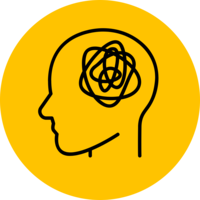Multilevel Influences on HIV and Substance Use in a YMSM Cohort (RADAR)
The RADAR study is designed to provide insights into risk and protective factors for HIV and drug use among young men who have sex with men and transgender women (YMSM). Participants include over 1,000 male individuals, recruited from two previous research projects, Project Q2 and Crew 450, alongside a third cohort of newly recruited individuals and their romantic partners. Those from the previous research projects and newly recruited participants were aged 16 to 20 years old, while their romantic partners could be up to 29 years old. Since the beginning of the study in 2015, participants have been followed up over 15 times, with follow-ups occurring every 6 months.
Study design
Cohort - accelerated
Number of participants at first data collection
1,015 (participants)
Recruitment is ongoing
Age at first data collection
16 - 29 years (participants)
Participant year of birth
Varied (participants)
Participant sex
Male
Representative sample at baseline?
The YMSM population of the city of Chicago in the United States of America.
Sample features
Country
Year of first data collection
2015
Primary Institutions
Center on Halsted
Chicago Department of Public Helth (CDPH)
Institute for Sexual and Gender Minority Health (ISGMH)
Northwestern University (NU)
University of Edinburgh (University o Edinburgh, Oilthigh Dhùn Èideann)
Profile paper DOI
Funders
National Institute on Drug Abuse (NIDA)
National Institutes of Health (NIH)
U.S. Department of Health and Human Services (DHHS)
Ongoing?
Yes
Data types collected


- Interview – face-to-face
- Physical or biological assessment (e.g. blood, saliva, gait, grip strength, anthropometry)
- Secondary data
- Self-report questionnaire – paper or computer assisted
- None
- None
- Existing research data
Engagement
Keywords
Consortia and dataset groups



